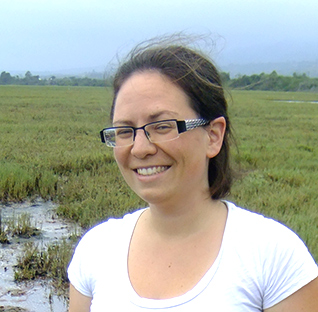Originally posted May 2, 2009
Some things are just better done in groups. For example, it’s better to wait until you have a large group of allies before going to war. People know this, and apparently bacteria do as well.
If a lone bacterium where to “decide” that it was time to launch an attack on its host, then the host’s immune system would probably be able to hone in on this individual and remove it rather quickly. The bacterium’s chance of success increases dramatically when it’s acting in conjunction with lots of other bacteria at the same time. Bacteria figure out how many of their allies are present through a system known as quorum sensing.
When a bacterium’s receptors detect a sufficient number of allies close by, a series of important genes related to accomplishing specific tasks are switched on or off. By this mechanism, everyone goes into attack mode together.
Bacteria use quorum sensing in other ways too. My favorite example involves a bioluminescent bacteria called Vibrio fischeri. Bioluminescent bacteria produce a glowing light, similar to the lights emitted by fireflies. Vibrio fischeri have an unusualsymbiotic relationship bobtail squids.
 During the day, these bacteria reside in a portion of the squid’s mantle, where they’re provided with ample resources for growth and reproduction. By night, when the squid is ready to hunt, the bacteria have sufficiently multiplied to the point where they reach quorum. At this point, they begin bioluminescing as a group.
During the day, these bacteria reside in a portion of the squid’s mantle, where they’re provided with ample resources for growth and reproduction. By night, when the squid is ready to hunt, the bacteria have sufficiently multiplied to the point where they reach quorum. At this point, they begin bioluminescing as a group.
So why would the squid want to be carrying around a bunch of brightly lit bacteria? Well, on moonlit nights the squid casts a distinctive shadow on the sea floor as it hunts, attracting the attention of predators.
The light produced by the bacteria cancels out the squid’s shadow. The squid’s bacteria pouch contains a filter, which the squid uses to dim the light to the point that the amount of light emitted from the pouch matches the amount of light shining on the side of the squid facing the sky. In return for a good meal and a safe place to call home, the bacteria help the squid hide from its predators.
At the end of the night, the squid squeezes most of the bacteria out of the pouch, leaving enough so that quorum will be reached again the following night.
Current quorum sensing studies are attempting to better understand mechanisms bacteria use to coordinate attacks on the human body. By figuring out how bacteria communicate with one another, it may be possible to disrupt their communication efforts and less the efficiency with which they attack.
If you’re interested in learning more, the Bassler Lab does a lot of awesome work on quorum sensing.

Cor blimey, if any of my Bio professors had been even half as articulate, I might not have switched majors in the end. Ah well, no law against reading.